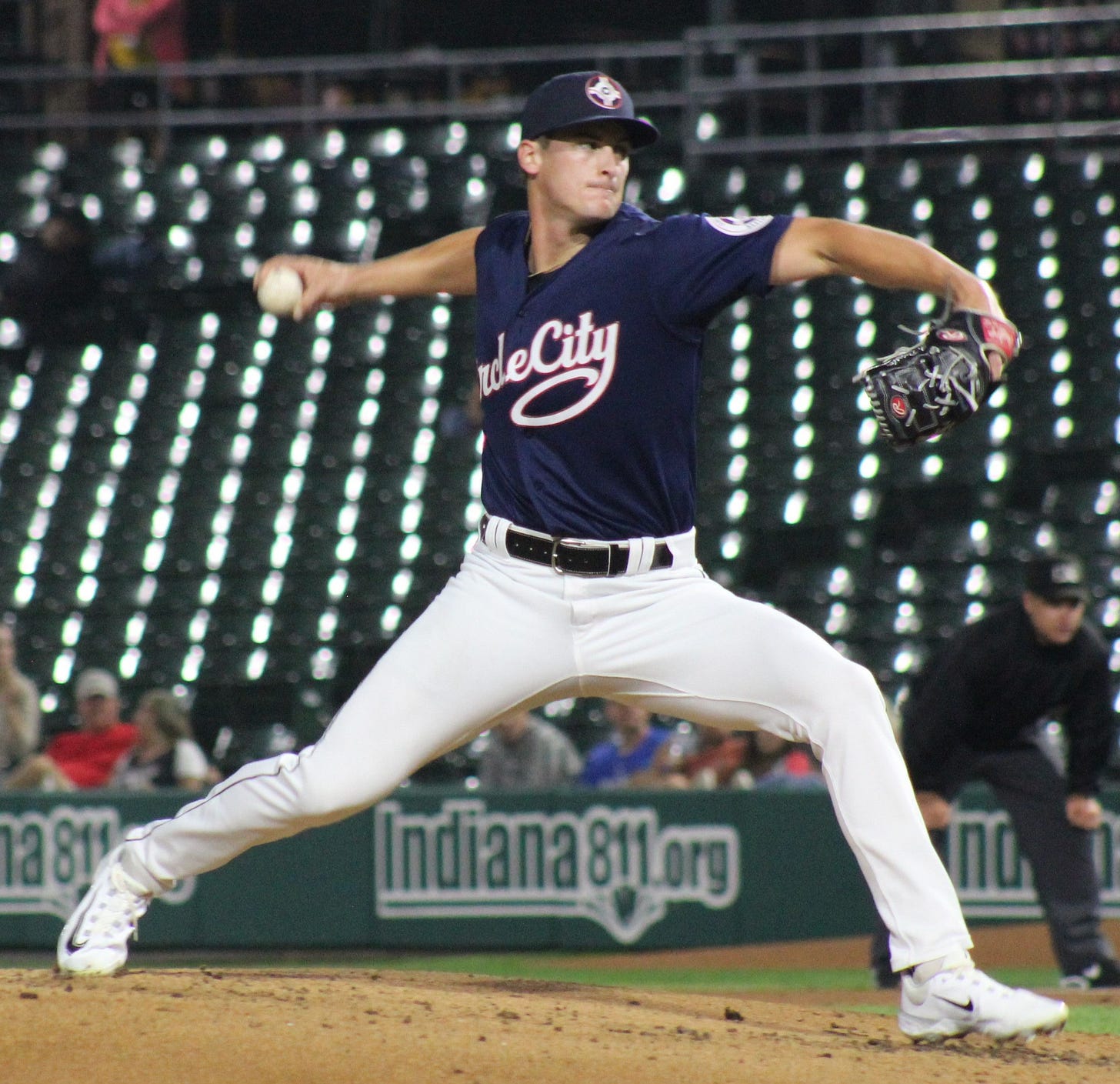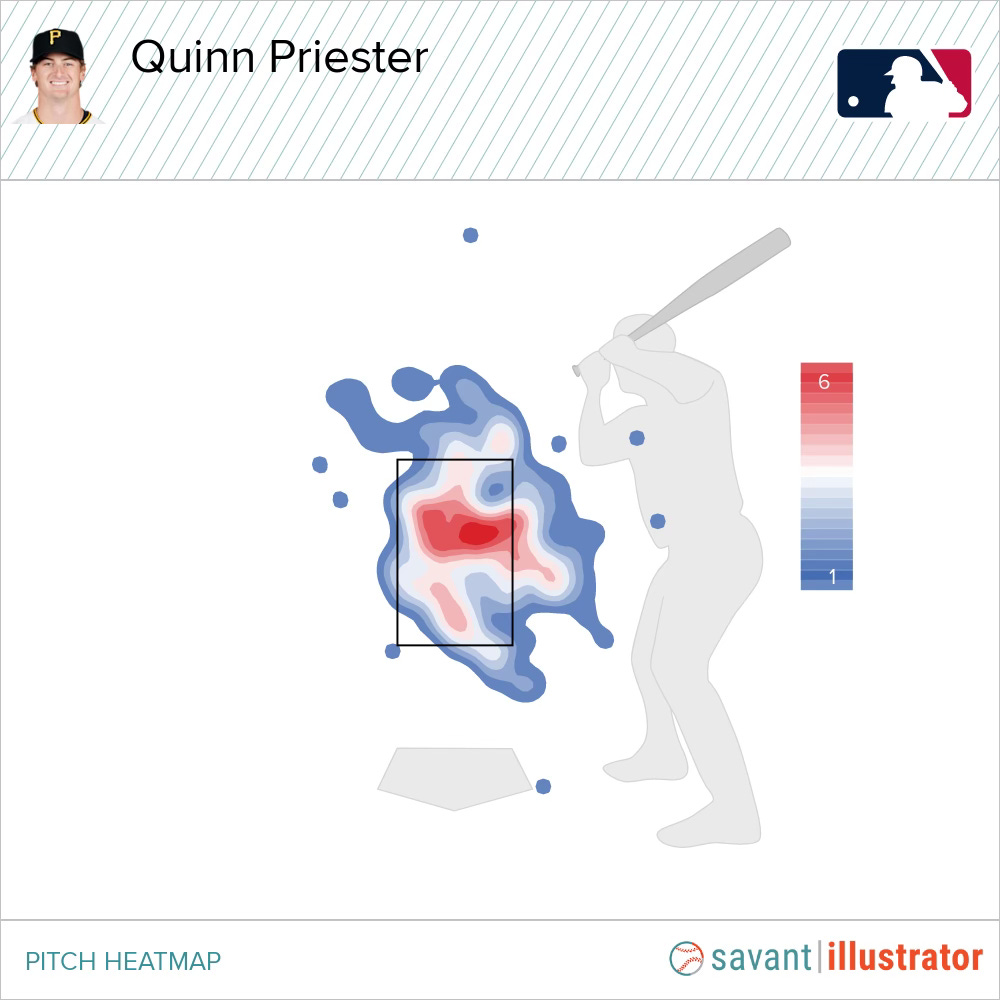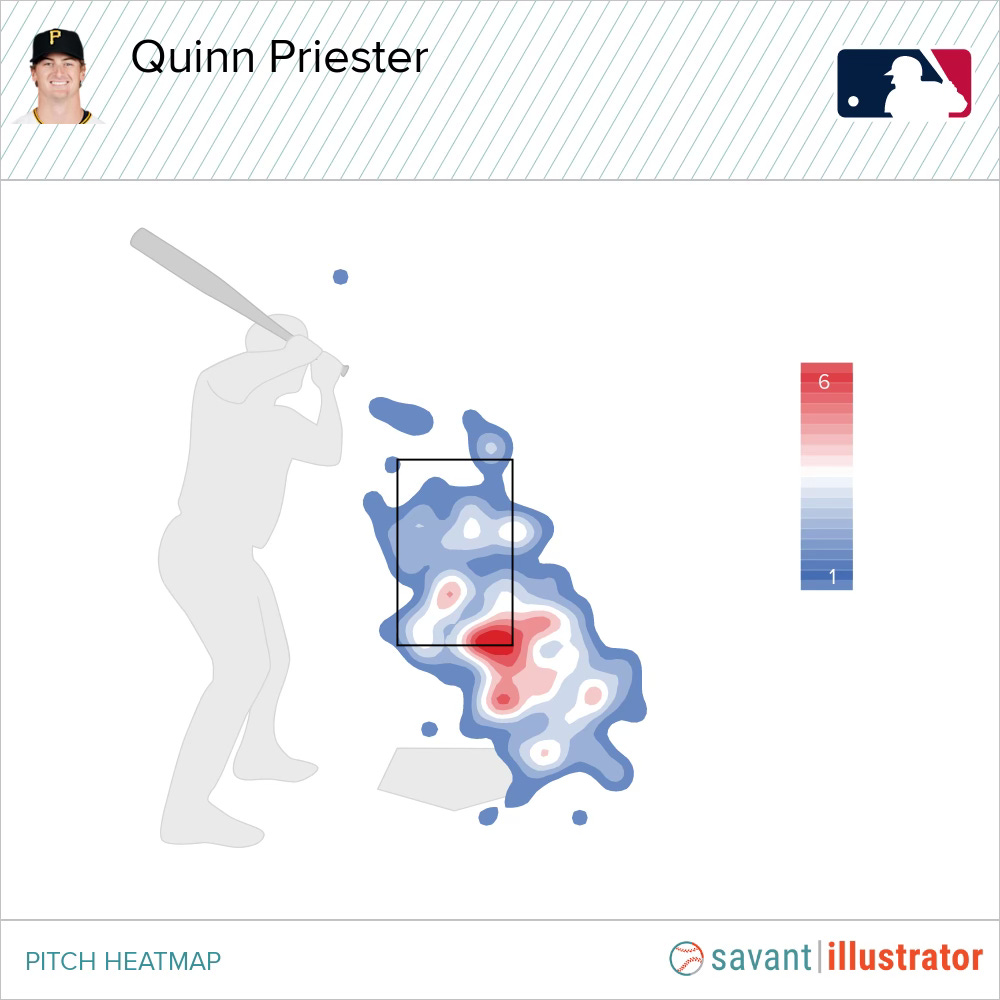Examining the pitch usage of Quinn Priester in 2023
A look at what pitches he used against who, and the success he had with them.
There’s no way around it; the major league debut of Quinn Priester - the Pirates’ first-round pick back in 2019 - was a bit of a letdown.
That’s not to say it didn’t get off to a great start, as in his first game against the Cleveland Guardians, he retired the first nine batters he faced. The wheels fell off after that as Priester allowed seven earned runs over 5.1 innings pitched.
He would pitch 50 innings in the majors split into two stints, finishing with a 7.74 ERA (5.10 xFIP), with 27 walks compared to 36 strikeouts.
These are not the most appealing stat lines from one of your top pitching prospects, but also carried on a trend that we have seen from some of their other young players coming up.
So what’s next for Priester? He’s only 22 years old and has a September birthday, so he will pitch the majority of 2024 at that age.
He’s succeeded in the minors, although his ERA has risen yearly as he has moved up the ladder.
Pitch Arsenal
Priester mixes in five pitches - Sinker, Slider, Curveball, Fastball, and Change-up. He’s been known to have one of the best curveballs in the minors throughout his career, with him adding the slider later on.
At this point, however, his slider has become his primary, effective weapon.
He threw the pitch 23.2% of the time, second only to the sinker. Hit was hit a little hard (.659 slugging), but the expected rate was nearly .200 points better. The slugging percentage was the fifth worst in baseball among the 225 players, with at least 50 plate appearances determined by a slider.
The difference between him and the others was that he was the only player with a whiff rate of over 40% among the bottom 10 in slugging percentage allowed.
He had the 37th-best whiff rate with the slider among that same group of players, so the slider wasn’t the easiest of pitchers to make contact with, it was just punished when there was.
The curveball fared better, to an extent, as hitters went just 5-for-24 (.208) against it, but two of those five were home runs, another a double.
The issue was with the four-seam fastball, which was bombed all season to a .818 slugging percentage against. In total, 11 of the 17 hits he allowed with the fastball went for extra bases, with his expected slugging percentage still an incredibly high .659.
His change-up showed some promise in Triple-A and the majors, but the lack of separation between it and his fastball/sinker didn’t do him any favors.
Priester posted a 25% whiff rate with the off-speed in the majors, and the .273 wOBA was by far the best of any of his pitches - yet he threw it the fewest.
Part of the issue is the need for more separation between his change-up and fastball/sinker, which averaged between a three and four-mph difference. Pulling the strings a little more could help the other pitches play up better.
The tale of two halves
Priester took entirely different approaches when facing each left and right-handed hitter.
Facing righties, he was primarily a sinker/slider guy, throwing them a combined 84% of the time. That included throwing his best pitch on Baseball Savant, his sinker 53% of the time, a big part of why right-handers posted a .773 OPS against him.
Conversely, Priester was a disaster facing left-handed hitters, posting a 1.103 OPS against him. The pitch selection could be at fault, as he threw his sinker just 12% of the time against lefties and used his worst pitch - the fastball - at 36% usage.
I remember an interesting conversation that Priester had with Matt Capps on a broadcast of a Pirates game before his debut. They talked about what he was working on, and Priester mentioned throwing the front-hip sinker against lefties, in which Capps gave him some pointers.
If that’s something he is still struggling with, that could explain why he favored the fastball against lefties more.
Is there a fix?
Based on the numbers he put up, he could try a few things this upcoming season to see if that can allow him to succeed in the majors.
Condense the pitches thrown
Obviously, the biggest thing is to scrap the fastball, especially against lefties. That would mean improving his command of the sinker, but if it’s statistically your best pitch, it will be hard to succeed when you throw it 12% of the time against the hitters you are struggling against.
At the very least, stop throwing it over the plate, especially when it already doesn’t have an ideal velocity/shape.
Throwing the change-up and curveball more while dropping the four-seam, by the percentages, should help him improve.
Trust the slider
The slider is weird, as it was technically his worst pitch by Run Value, but it also put up the best whiff rate and judging by where he was placing it against righties, he probably should have had more success than he did.
The pitch was almost always at one end of the spectrum or the other, with a 32.4% strikeout rate against righties but also a .313 average and .437 wOBA.
Based on the heat map, if he continues with that placement, I believe he should have more success than failures.
Added separation, more usage of change-up
Ideally, you want to see Priester throwing harder with the fastball/sinker, but no matter how he does it, there has to be more of a difference than there is.
He located it well down and away from lefties, but using it just 16% of the time won’t let him take full advantage of it.
Having Priester put things together and take a step forward would be huge for the Pirates in 2024. They have Mitch Keller at the top of the rotation while bringing in Marco Gonzales and Martin Perez, but many questions after them.
Even the two additions have some questions and upsides that are very limited, so having someone step up and lay claim to a rotation spot would be a bonus.
He’s been more of a ‘high-floor,’ back-of-the-rotation type of prospect for the last year or so, which works out perfectly fine when you look at the potential talent coming up soon.
That being said, the Pirates haven’t had the best luck in drafting and developing pitching in recent history, so getting a win from Priester is a big deal, even if the current front office wasn’t the one that took him.







Really nice write-up, Anth.
I think it's far past time to acknowledge the clearest issue with Quinn Priester, which is that his stuff just isn't good.
We refuse to update our priors and continue talking about him as some plus fastball-curve guy when neither pitch is close to big league average.
His first step needs to be going to the Mitch Keller School of Getting My Nuts Back, and then we can discuss strategy from there.
He uses a four-seamer against lefties to set up his curveball, because a four-seamer, with less drop, plays better up in the zone than his sinker, which has more vertical drop and will tend to drop down onto the bats of hitters. If he wants to throw his curveball strikes, it will start out looking high: so it must be paired with some other pitch that comes in high (generally a four-seamer). Generally speaking, a pitcher does not what to use a sinking fastball high in the zone. Priester's two-seamer is a true sinker and does not have the horizontal movement that you will see with Perez (which is why Perez's two-seamer pairs so well with his cutter: both moving in opposite directions horizontally).
To my mind, the simplest solution for Priester is to develop a cut fastball. A good cut fastball tends to play better against opposite-side batters (righty versus lefty) and has most of the velocity of a four-seamer. With good glove-side run on his cutter, he could play it a little higher in the zone, counting on it to move in on the hands of lefties. This he could pair with his curveball, and this would allow him to drop both the changeup and the four-seamer. Of course, this all depends on his ability to learn to cut his fastball, but he seems a quick study in learning new pitches.